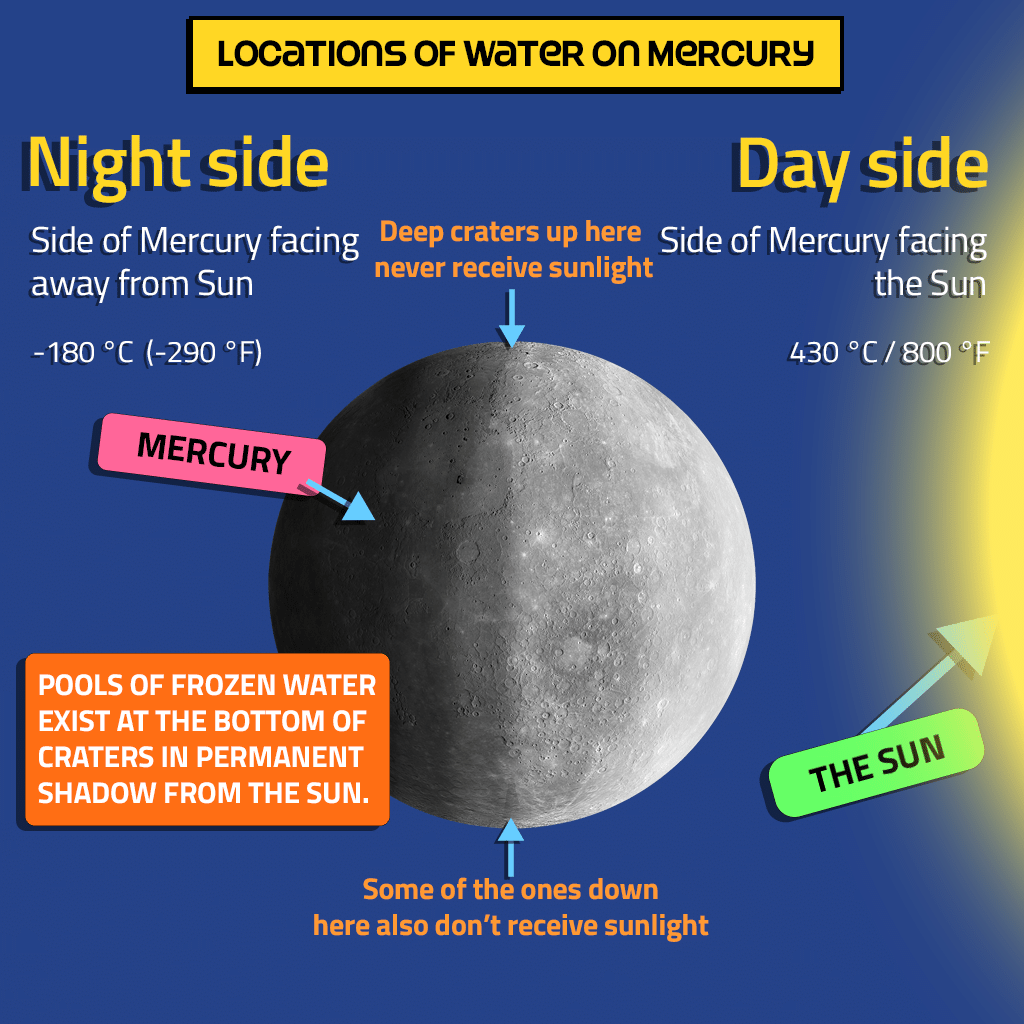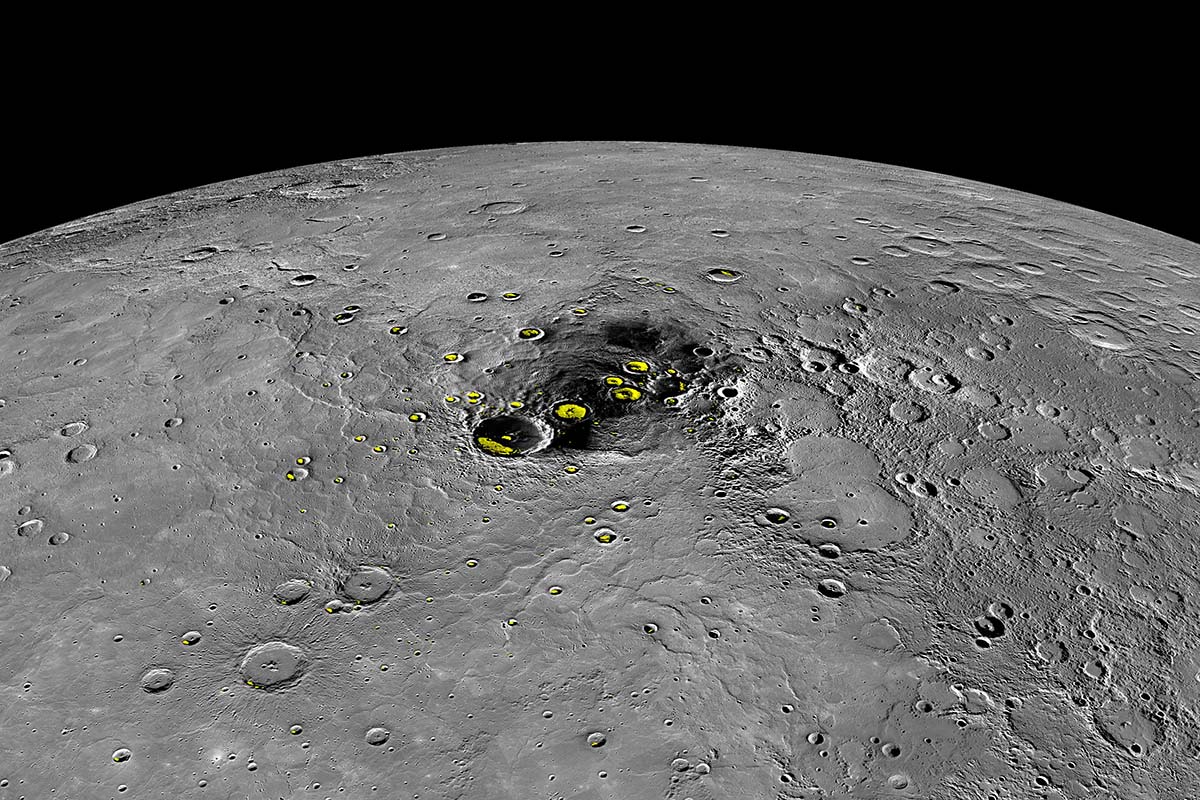Water on Mercury
If there was ever an award for the planet with the most craters in the solar system, the winner of it would be Mercury. It’d be a bit of a strange award to win, which probably explains why such an award doesn’t actually exist but even so, Mercury’s surface is covered with craters. Hidden deep within the depths of some of Mercury’s darkest and dingiest craters is water. It’s not the first thing you’d expect to find on a planet situated right on the door step of the Sun, but it’s most definitely there. So, how did it get there, how did we find it and why doesn’t the heat from the Sun simply boil it away? Oooooh, so many questions. And here are the answers. Maybe not necessarily in the same order as the questions.

Mercury is the closest planet to the Sun and receives lots and lots of intense heat from it. On the side of Mercury facing
the Sun – its day side – temperatures are 427 °c (801 °F), much too hot for water to exist. On the side facing away from the Sun – its night side – temperatures
plummet to as low as -173 °c (-279 °F). At these temperatures, water could exist as frozen ice.
As Mercury travels around the Sun, it also spins on its axis. It’s kind of like a kebab spinning on a skewer. This
means that all parts of the planet must face the Sun at some point. Doesn’t this mean that if there was any water on
Mercury it would simply boil away and vapourise into nothing?
Nope! The floors of some of Mercury’s craters are in permanent shadow of the Sun. This is because those craters are
located around Mercury’s polar regions and are deep and have high rims. The Sun cannot shine all the way into them, which
means that heat from the Sun can also not reach those parts. So, yes, any water in those areas could in fact remain. And in
2012, excited NASA scientists confirmed that water had been spotted in those parts!

The first hint that water might exist on Mercury came in 1991 when scientists observing the planet from Earth with
radar noticed something bright on its surface. These observations were made using the Arecibo radio telescope in
Puerto Rico.
Radar wasn’t able to confirm for definite that it was there, just that there is something there that looks
like it could be water. It was only confirmed for certain when MESSENGER went into orbit of Mercury in 2011.
MESSENGER was a space probe that launched from Earth in 2004. Its mission was to send back photographs and data of the planet and
amongst them were images that showed the presence of water ice in some of its craters. After completing its mission in 2015,
MESSENGER was sent to crash into Mercury, creating another new crater on the planet’s surface.
It isn’t known for certain how water ended up on the planet. More than likely it was delivered to Mercury on board comets, asteroids or meteoroids travelling around the Solar System and smashing into the planet, releasing their watery contents and leaving it there to freeze and remain for eternity. Well, until a thirsty alien decides to drop by and pay it a visit. Don’t go getting any ideas, Bobsdog!





